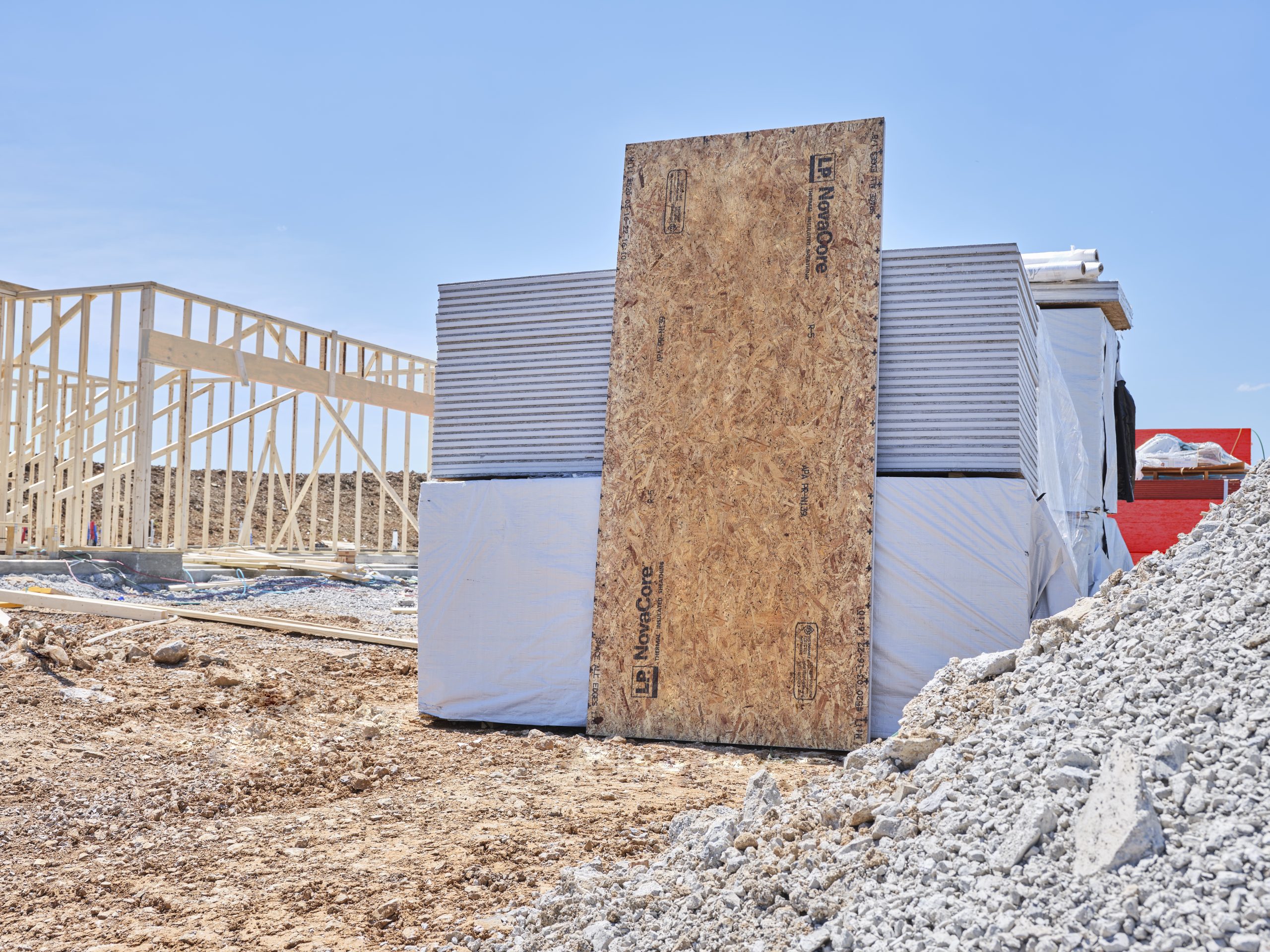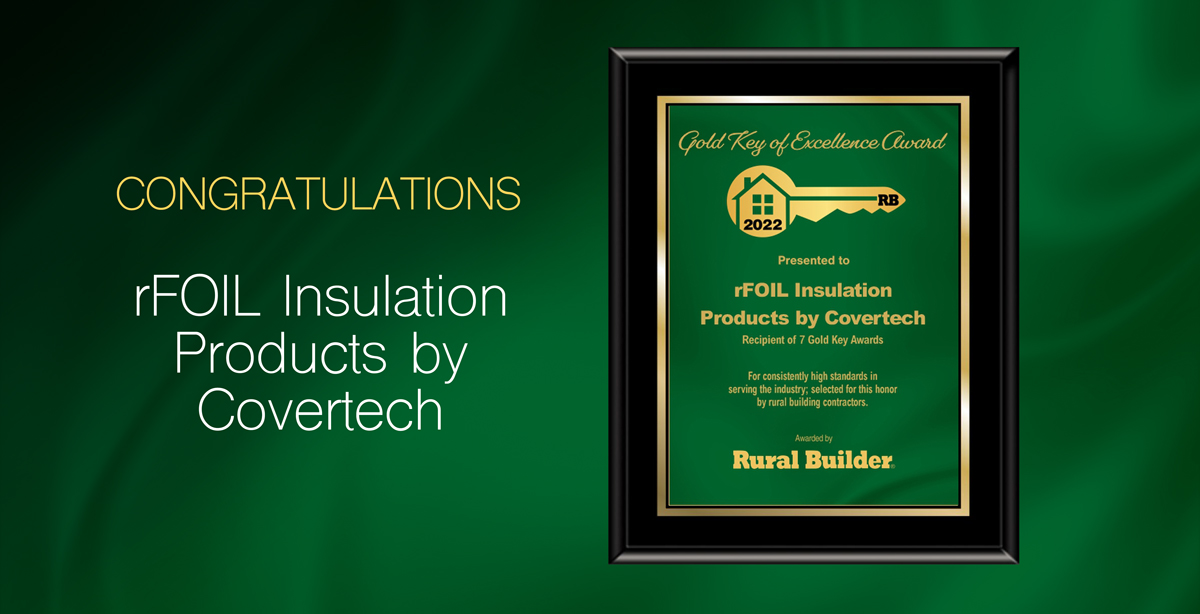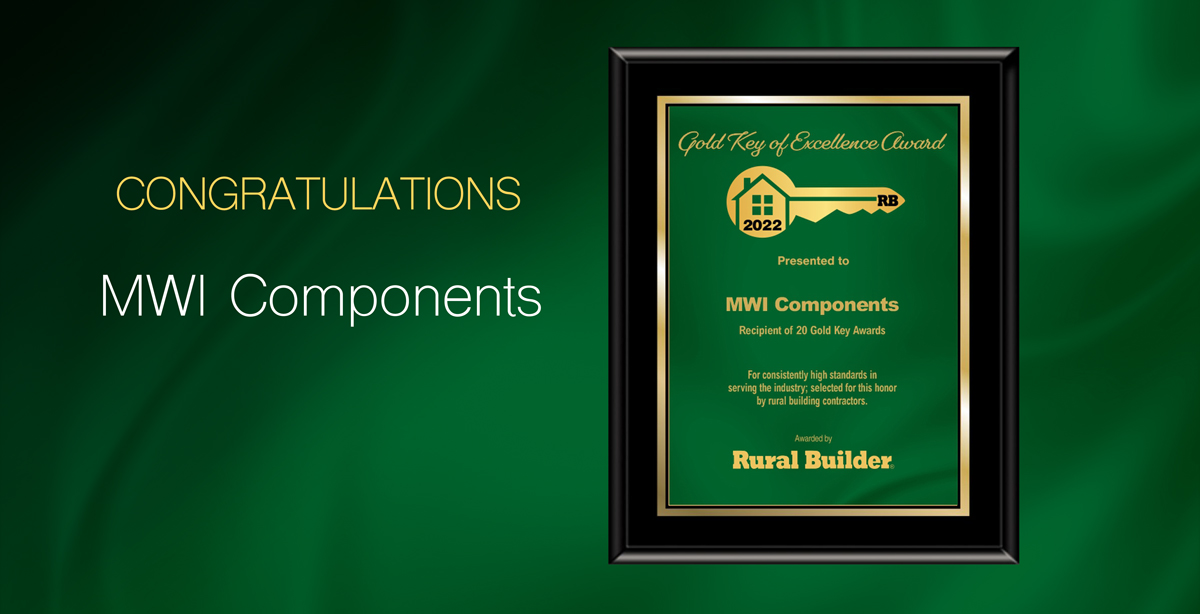As a builder, you know your customers want a building that serves its intended purpose. It’s even better if that building doesn’t cost a lot to own and operate. Heating outside air is often the most expensive energy budget item in a building. Harnessing free solar energy to heat the outside air can have a huge impact on a building’s energy needs; that energy can be captured with a “low-tech” transpired solar collector—best installed during initial construction—which will help heat the building during cold weather and lessen heat gain during hot weather.
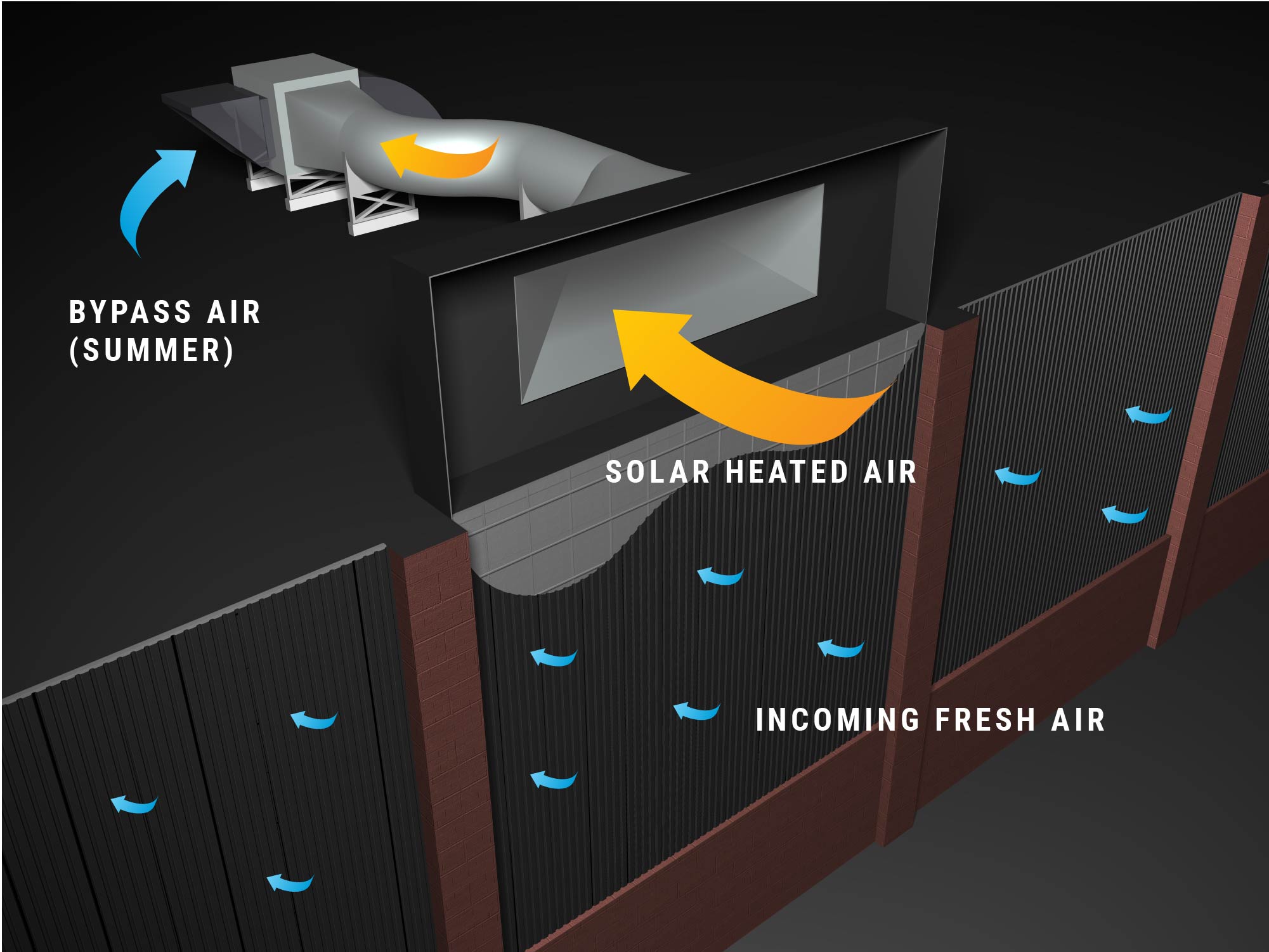
According to the Department of Energy’s Federal Technology Alert: Transpired Collectors (Solar Preheaters for Outdoor Ventilation Air), “[A transpired collector] preheats the ambient air by up to 40°F, reducing all or a portion of the load on a heating system during daylight hours. Although the transpired collector may not be able to achieve the required indoor air temperature on cloudy days or when the outside temperature plummets, it provides useful energy and reduces utility bills.
“In addition to meeting a portion of a building’s heating load with clean, free solar energy, the transpired collector helps save energy and money in other ways,” the report continues. “It recaptures heat loss through a building’s south-facing wall; heat that escapes through the south wall is captured in the air space between the structural wall and the transpired collector and returned to the interior. Also, by introducing make-up air through ceiling-mounted ducts, the system eliminates the wasteful air stratification that often plagues high-ceiling buildings.” [Read or download the full Alert at https://bit.ly/airpreheat.]
ATAS International has been involved in the manufacture of transpired solar collector panels since 2002. In 2006, the company released its InSpire wall solar air heating system. Christian Vachon, P.Eng., M.Sc., Director of Solar Technology at ATAS, explained that solar collectors are used on commercial buildings requiring a large amount of air exchange. “Some buildings require a lot of outside air to be brought in; it’s really costly to have to frequently exchange and heat outside air. What the solar collector does is preheat the outside air for free.” Examples of buildings that are good candidates for transpired solar collectors include schools, hospitals, agricultural facilities, sports complexes, warehouses, office facilities, garages and workshops, and other facilities that require large amounts of air exchange.

When asked if transpired solar collectors were used on residential buildings, he explained that, by comparison, a residence doesn’t require nearly as much air exchange as commercial buildings. “Very little air is exchanged in a residence,” Vachon said. “A school requires a lot of outside air. It would work on a residential level, but paybacks would be long. Residential application is on the fringe.”
The region in which the building is located also helps determine whether or not installing a transpired solar collector makes sense. Commercial buildings in areas that are cold but have a lot of sunlight are excellent candidates.
Installation
The components of a solar air-heating system are relatively simple. For example, according to ATAS International, the InSpire Solar Air Heating Collector consists of vertical z-channels installed on the exterior wall, with horizontal hat sections attached to the verticals to create the framing structure for attaching the perforated panels. In addition to acting as an attachment structure, the girts and sub-girts also create a plenum behind the panel through which the warmed air travels up to the ventilation intake. Solar radiation warms the collector and creates a layer or film of warm air on the surface of the panel. An intake fan within the building then pulls this warm air through the perforations, into the plenum, and then into the normal air handling system.
ATAS manufactures its InSpire solar collectors with aluminum or zinc, both of which are coated with 70% PVDF coating. Vachon said 95% of the InSpire panels they sell are aluminum, with the balance being zinc. “We use aluminum or zinc because once perforated, the metal will be exposed to the environment. There may be corrosion if using steel because the panels will be exposed to rain and snow.”
No special skills or tools are needed to install an InSpire Solar Air Heating Collector, but there is a process to follow. Architects work with ATAS which will design a system specifically for each project. Once the project plans are complete, the job goes out for bids. The contractor who wins the bid buys the InSpire collector from ATAS, which manufactures everything in the system and ships it directly to the jobsite, along with the “installation instructions” (shop drawings).
No Maintenance Required
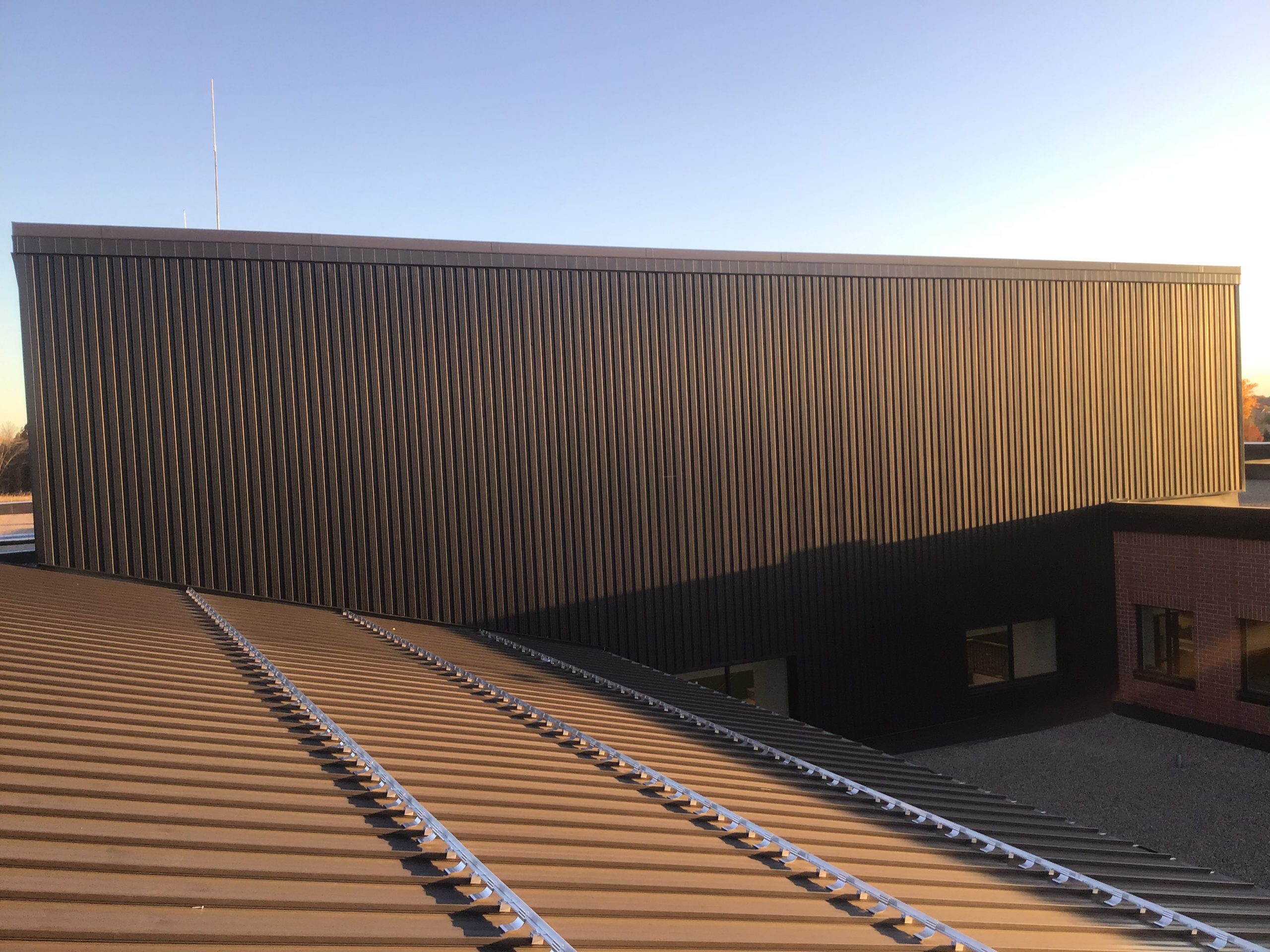
“Typically contractors sometimes they think, because it’s solar it must be complicated,” Vachon said. “This system is very simple. They also think that because it’s solar it may break,” he continued. “But it won’t. Air doesn’t freeze or overheat so basically nothing bad is going to happen to the InSpire collector. Sometimes contractors have had bad experiences with different solar systems, which can make them uncomfortable with solar. But with a solar air heater, you install it, go home and sleep and think about your next job. The system will be fine.”
Vachon added: “There’s no maintenance on a solar collector. Once the contractor leaves the job, they’re done. They don’t need to worry about breakdowns [or callbacks].”
ATAS provides the detailed shop drawings for contractors to follow. Vachon cautioned, however, that to have a successful project, contractors need to work together. “The mechanical, general, and cladding contractor all need to coordinate. They need to make sure they all connect so everyone does their part right.” Vachon also cautioned that contractors should not attempt to design and create their own systems. In his experience, when that happens, the system doesn’t work.
“ATAS has been in the solar collector business for more than 20 years. We know what perforations are needed, we know the proper wall spacing and how to work the air intake locations,” Vachon said. “We take on the responsibility that it will work. And we can include a monitoring system if the buyer wants to know their savings.”
Efficient And Dependable
As a builder, if your customers are exploring solar energy options, knowing how efficient solar air-heating systems are compared to the more expensive photoelectric panels will give you an additional talking point. As it turns out, transpired collectors are much more efficient than electric solar panels. “Photoelectric panels are 15% efficient,” Vachon said. “These panels are 70-75% efficient. You get a lot more energy per square foot than what the electric panels would give you. “You can save 33% or more of your outside air heating costs by using the InSpire. Can be more, can be less.”
Not only is the system efficient, it lasts a long time, too. Vachon sold his first transpired solar collector in 1997 and that system is still working. Until the building is shut down or revamped, he doesn’t see why or when it would stop.
“As long as the ventilation system is still running, that system will keep working,” he said. “There are no moving parts. It has the lifetime of the outside panel on the wall.”
Although your customers may be most enthusiastic about a transpired solar collector lowering their energy bills, you can be confident that this is one green energy upgrade that you can install and move on without worry. Since there are no moving parts and no maintenance, the system will last for decades and you can rest knowing you’ve made your customer happy and made the world a greener place. RB



